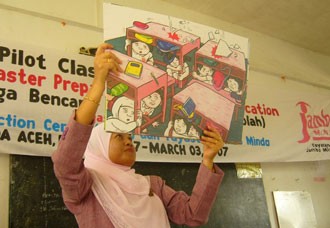 Disaster risk reduction and education is an interactive process of mutual learning between people and institutions.
Disaster risk reduction and education is an interactive process of mutual learning between people and institutions.
Reducing risk and vulnerability to disasters requires people understanding how they can best protect themselves, their property and their livelihoods.
The key to education and disaster risk reduction is sharing and using information and knowledge in a productive way through awareness-raising and educational initiatives so that people make informed decisions and take action to ensure their resilience to disasters.
Education and DRR is about formal and informal ways of exchanging knowledge.
It encompasses both formal education at schools and universities and informal education such as the recognition and use of traditional wisdom and local knowledge for protection from natural hazards.
Education is conveyed through experience, established learning arrangements, information technology, staff training, electronic and print media and other means that facilitate the sharing of information and knowledge to citizens, professionals, organizations and policymakers, among a range of other community stakeholders.
Education is a crucial means within local communities around the world to communicate, to motivate, and to engage, as much as it is to teach. Awareness and learning about risks and dangers needs to start in early education, continuing through generations.